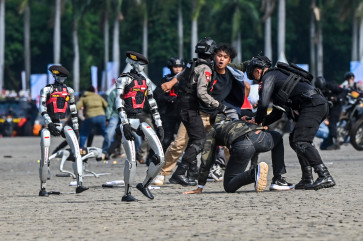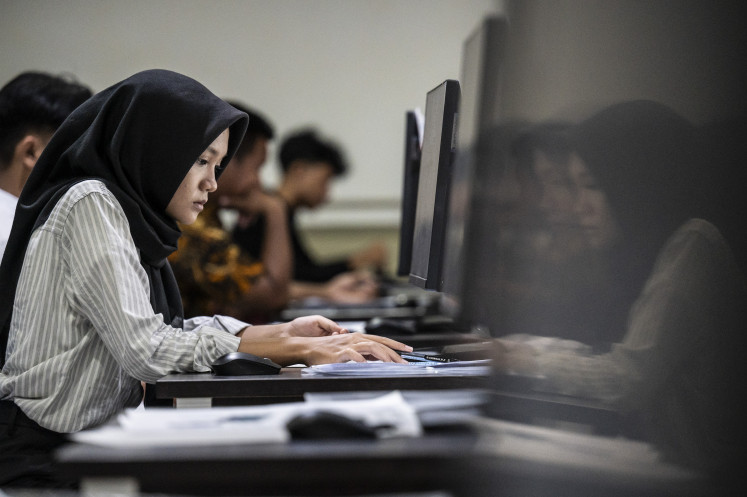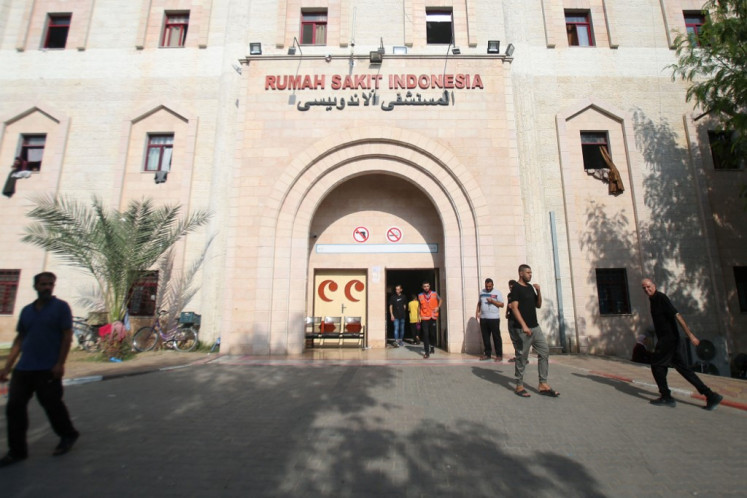Popular Reads
Top Results
Can't find what you're looking for?
View all search resultsPopular Reads
Top Results
Can't find what you're looking for?
View all search resultsRethinking impact: Investing in the circular economy to fight climate change
Reductions to greenhouse gas emissions must also come from addressing the complex systems that produce, deliver, and use our products and food.
Change text size
Gift Premium Articles
to Anyone
F
or many of us, 2020 was a year postponed. While we were focused on coping with the COVID-19 pandemic, we lost ground on other critical issues, including plastic pollution and climate change. It may have gone unnoticed, but the waste management and recycling value chain in South and Southeast Asia has ground to a halt while the use of single-use and virgin plastics has soared. The situation is untenable for the long run and the environmental impact is sobering.
As we inch closer to the promise of mass vaccination and kick off 2021 in the Year of the Ox, it is time to adjust our perspective: these crises present incredible prospects for economic recovery and growth, and are not just environmental issues for the dinner table.
Every crisis presents an opportunity. We now have the chance to take a step back and hit the reset button, revisit basic assumptions and to assess whether our current approach can address the problem at scale and compound impact.
First, if the pandemic has taught us anything, it is that we need to invest more in local resilience, local economies, and local supply chains to foster sustainable economic growth and generate new jobs in the new normal. For example, job creation can no longer just be about generating more job positions, instead, we should be creating the types of jobs that can be pandemic-resistant.
Second, we need to harmonize the pandemic recovery response with strategies that attain systemic environmental resiliency. The pandemic and ongoing environmental issues can be addressed simultaneously – through a fundamental shift away from a focus on short-term performance of systems, to ensuring sustained outcomes in the longer term.
South Korea’s Green New Deal is one such plan that aims to address the economic and climate crises concurrently, and can be used as a model throughout South and Southeast Asia. It aims to generate 650,000 jobs by increasing the supply of renewable energy, developing low-carbon industries and promoting electric vehicles, among other initiatives.
Today, public opinion largely agrees about the dangers of climate change. However, the link between plastic pollution and the climate crisis is not often made. Rather, some view that the growing focus on plastic pollution is detracting from the climate change issue.
According to the Ellen MacArthur Foundation (EMF), sustainability efforts such as moving to renewable energy sources can only achieve a 55 percent reduction of global greenhouse gas emissions. This is an essential step, but embracing renewable energy alone cannot address the complex problem of climate change.
Reductions to greenhouse gas emissions must also come from addressing the complex systems that produce, deliver, and use our products and food. Adopting a circular economy framework in plastics, as well as other materials like steel, aluminum, cement, and food could help cut 9.3 billion tons of greenhouse gases by 2050.
Using India and Indonesia as case studies (both among the top countries where plastic leaks into the environment), the connection between the plastic issue and the climate issue can be illustrated.
By preventing plastic leakage into the environment and ensuring that plastic waste is managed properly and recycled in these two countries alone, we have an opportunity to eliminate almost 150 million tons of greenhouse gas (GHG) emissions by 2030, according to Circulate Capital’s Climate Impact Measurement Tool, developed in partnership with A*STAR.
This is achieved through the avoided production of virgin plastic materials due to the use of recycled plastics, the formalization of plastic waste routes, and the diversion of plastic waste away from open burning. This is the same amount of GHG savings that can be derived from shutting down 40 coal-fired power plants.
In particular, open burning is arguably the worst way to manage plastic waste. In Indonesia, 36 percent of plastic waste is managed through open burning, but that action contributes 91 percent of the total carbon footprint of all plastic waste in the country.
With this improved understanding of the connection between plastic pollution and climate change, investments in climate-resilient infrastructure and the transition to a lower-carbon future will be integral. They not only accelerate the development of sustainable infrastructure and drive significant job creation, but also increase economic and environmental resiliency. The waste management and recycling industry are at the heart of the circular economy and the next frontier for infrastructure investors looking for climate-resilient opportunities.
As financial investors providing catalytic capital to support private enterprises advancing the circular economy, we believe that material improvements to the industry across the region can be made by addressing systemic gaps and pain points within the waste ecosystem, such as fragmentation, lack of waste source traceability and low quality of recycled materials.
There are three key innovation strategies that can propel the positive impact of the industry in South and Southeast Asia. First, scaling collection and sorting in collaboration with local cities will ensure that the material required to drive the circular economy is collected effectively and efficiently. Then, scaling the upcycling of material to derive more value from waste by developing higher value applications for recycled plastic, such as food-grade applications, will close the loop on plastic usage. Finally, increasing the digitization of the industry to promote efficiency, transparency and traceability, will connect all players of the value chain.
The waste management and recycling industry may not sound like the most exciting investment target but this territory is not a frontier economy where investors are required to take on outsized risks. To recognize the potential we can look at other leaders in the space, with companies like Veolia making 10 billion euros (US$11 billion) of revenue from waste management in 2019 alone.
With near-zero interest rates presenting a favorable investing environment for the foreseeable future, the time is now to invest in the region’s waste management and recycling industries so that the increase in plastic waste can be more effectively managed, resulting in not only the diversion of plastic waste from the environment and landfill, but also a reduction in GHG emissions.
***
The writer is founder and CEO of Circulate Capital.










